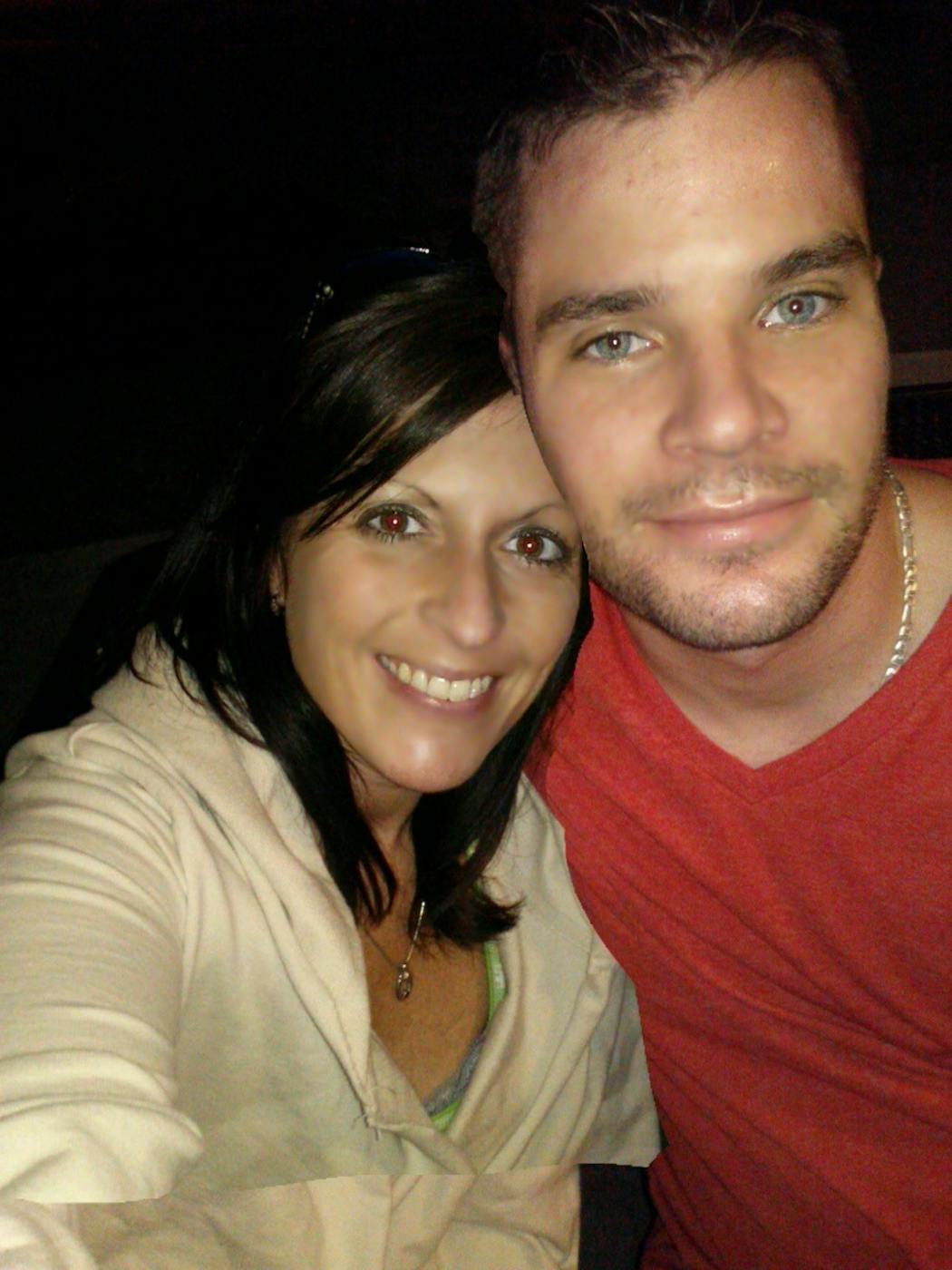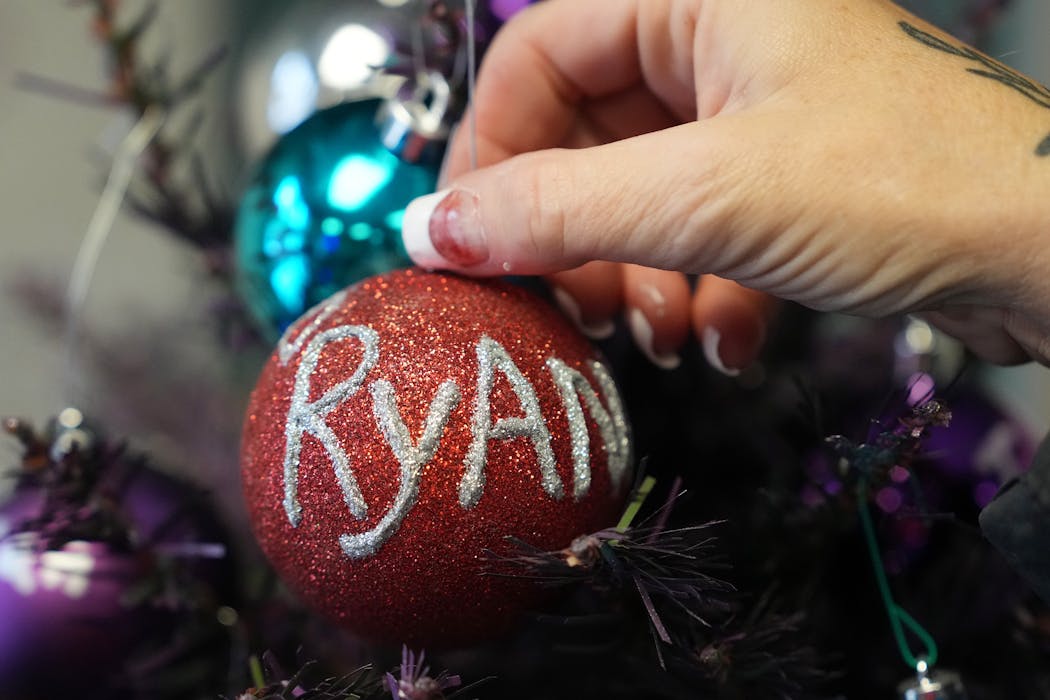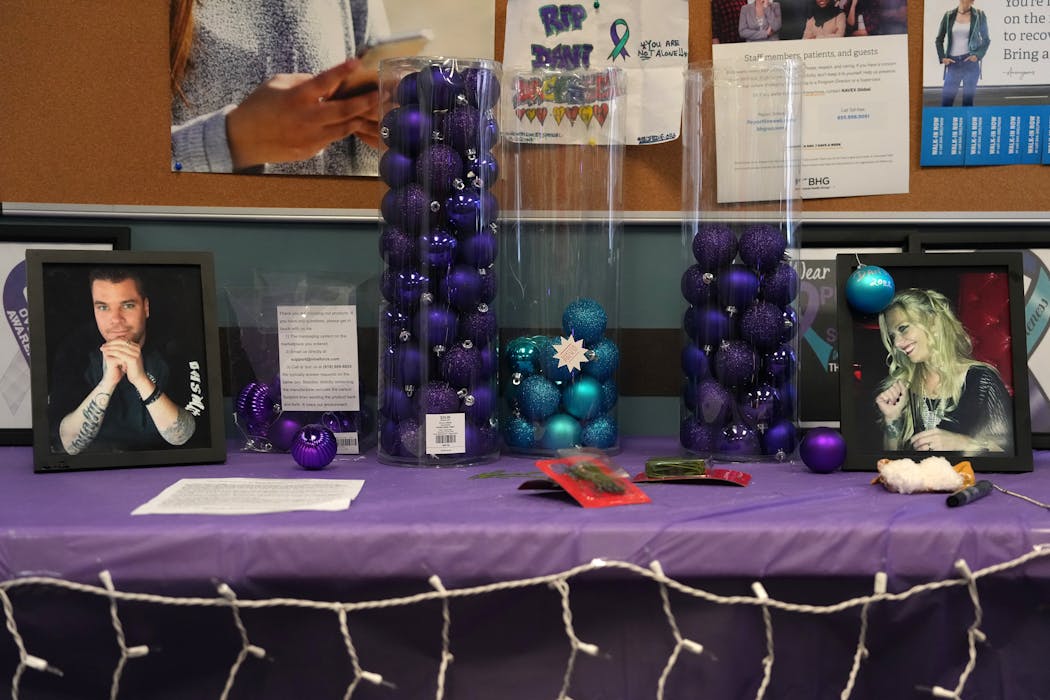When Anne Emerson's fiancé got out of jail in late October 2017, he talked about how much he was looking forward to being with his family for Christmas and decorating a tree.
Her fiancé, 34-year-old Ryan Anderson of Anoka, had missed many Christmases over the years. He'd spent them in jail or prison, having served time behind bars off and on since the early 2000s, mostly on drug-related charges.
But Anderson didn't make it to Christmas. Just over a month later, he died of an opioid overdose.
"It didn't seem real, you know?" said Emerson, now 42 and an Anoka resident. "It almost felt like he was in prison and not dead."
The following year was, if anything, worse. "By then, the reality had kind of set in that he was actually gone."
As she shopped for Christmas gifts, Emerson kept thinking she was missing a gift for Ryan. She wondered what she could do to fill that empty space.
She decided to put up a Christmas tree in memory of people who'd lost their lives to drugs. Emerson, herself a former meth user, was sober by then and eventually became a member of the Minnesota team of the Recovery Advocacy Project, a grassroots group that helps people with addictions and works to change laws.
She installed a Christmas tree at Valhalla Place, an outpatient addiction treatment center in Brooklyn Park, with help from Dani Drechsel, a former addict and Valhalla's program coordinator.
They spray-painted an artificial tree purple, the color associated with overdose awareness. They set out ornaments on a nearby table, inviting people to dedicate them to their loved ones. Emerson wrote "Ryan" on one and hung it on the tree.
Soon "the branches just sagged" with ornaments, Emerson said. She and Drechsel had to restock the ornaments so many times they cleared out all the purple and silver ornaments at seven Walmarts.
She has installed the tree every year since, in the waiting area where Valhalla clients and their families can see it. She hangs ornaments from previous years and adds new ones, including some for friends around the country. Last year, someone donated a second tree. Both trees were quickly filled. This year she put up three trees and went through 200 ornaments in the first two weeks. She added ornaments in teal, a color often associated with suicide awareness.
Drechsel had died by suicide in September.
Emerson often sees Valhalla clients gathered at the table by the tree, talking about their lost loved ones.
"It's become a very special place for people, more than I thought it ever would," she said.
Something was very wrong
When Emerson met Anderson in 2012, he was sober. But within a year he had relapsed. At first, Emerson figured he was using meth.
"Things became rocky once I realized it was heroin," she said. "I had never seen heroin before, let alone hung out with anyone on heroin."
The next year, Anderson's brother died of a heroin overdose. The brothers, 10 months apart, had been like best friends. "He was never the same after that," she said.
Seven times over their 5½ years together, Emerson found Anderson in the midst of an overdose. She gave him CPR and the anti-overdose medication naloxone and called 911. One time he aspirated vomit and had to spend a week on a ventilator.
On Nov. 28, 2017, Emerson got a call from a friend saying Anderson was passed out in his truck. Half an hour earlier, he had told Emerson on the phone that he was on his way home and "sounded completely normal." But when she got to his truck, it was clear something was very wrong.
"He had a dead stare, his eyes were open but he wasn't moving at all, wasn't breathing," she said. "I tried to find a pulse and couldn't find one."
At the hospital, Anderson went into cardiac arrest. Five days later, he was taken off life support.
Emerson found a plastic bag in his jeans pocket containing what Anderson apparently had thought was heroin. But actually it was mostly fentanyl, a synthetic opioid 50 to 100 times stronger than morphine.
Three grains of rice
Between the years 2000 and 2020, according to the state Department of Health, annual drug overdose deaths in Minnesota soared from 54 to 678. Last year, that number came close to doubling, with 1,286 Minnesotans dying of overdoses.
In other words, fatal overdoses claimed more than three Minnesotans a day on average in 2021.
The increase is largely attributed to fentanyl, which according to the department was involved in 90% of all deaths involving opioids.
"A dose as small as three grains of rice can be lethal," said a department news release in July. "Fentanyl is becoming more common in illicit drugs, even laced in other drugs like cocaine or methamphetamine."
People often think their drugs are OK because they know and trust their dealers. said Randy Anderson of Golden Valley, an addiction counselor and recovery advocate.
"But street-level dealers have no idea what's in the drugs anymore. They'll say, 'Oh, no, it's cocaine, it's fine' — when, no, it's not."
Three ornaments
Three of the ornaments on the Valhalla Christmas trees honor members of Randy Anderson's family.
His sister, Amber, died of endocarditis, a heart infection often associated with intravenous drug use. Anderson made sure doctors listed IV drug use among the causes of her death.
"I know through the work I've done that those statistics are so important when we talk about who gets what funding," Anderson said. "It was so important to make sure my sister was part of the solution."
His birth mother, Barbie, died of a heart attack triggered by the substances she had used on and off throughout her life. After her death, his stepfather, Todd, "spiraled down a bad path," Anderson said.
Todd had been addicted to opioids on and off since serving in Vietnam. He knew the drugs he possessed contained fentanyl but thought he'd built up enough tolerance over the years that he could manage them. He couldn't.
"Nobody can manage fentanyl — a tiny dusting is a lethal dose," Anderson said. A former addict with 18 years in recovery, Anderson operates Bold North Recovery, which trains peer-recovery specialists — former addicts who help other addicts.
"It means a lot to me that there are people like Anne that care so much about this issue that they do things that are just selfless," Anderson said.
His voice broke. "My sister still gets to be involved in Christmas in a different way. Other people get to see that ornament hanging on that tree and wonder who Amber was."
Drechsel's stepmother and father, Lorie and Paul Nei of East Bethel helped Emerson install the trees this year and plan to keep doing so in their daughter's name.
"This was her love, the thing that she wanted to do and to carry on," she said. "We're going to keep Dani alive in that way, trying to help whoever we can through these trees."
Suicide is not uncommon in recovery communities, said Nei, a paramedic. The other day, she met a woman with three bulbs on the tree, honoring a fiancé who overdosed, a friend who overdosed and another friend who died by suicide.
"I gave her a hug," Nei said. "Just to be able to come alongside these people and listen and tell them you're sorry, I think it's huge. I think it helps them, just hanging a bulb up there and knowing that the person is not forgotten."
Correction: Film Review-We Grown Now story
Judge declines to dismiss lawsuits filed against rapper Travis Scott over deadly Astroworld concert

Summer Movie Guide: Virtually all the movies coming to theaters and streaming from May to Labor Day







